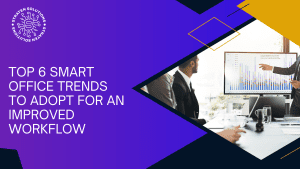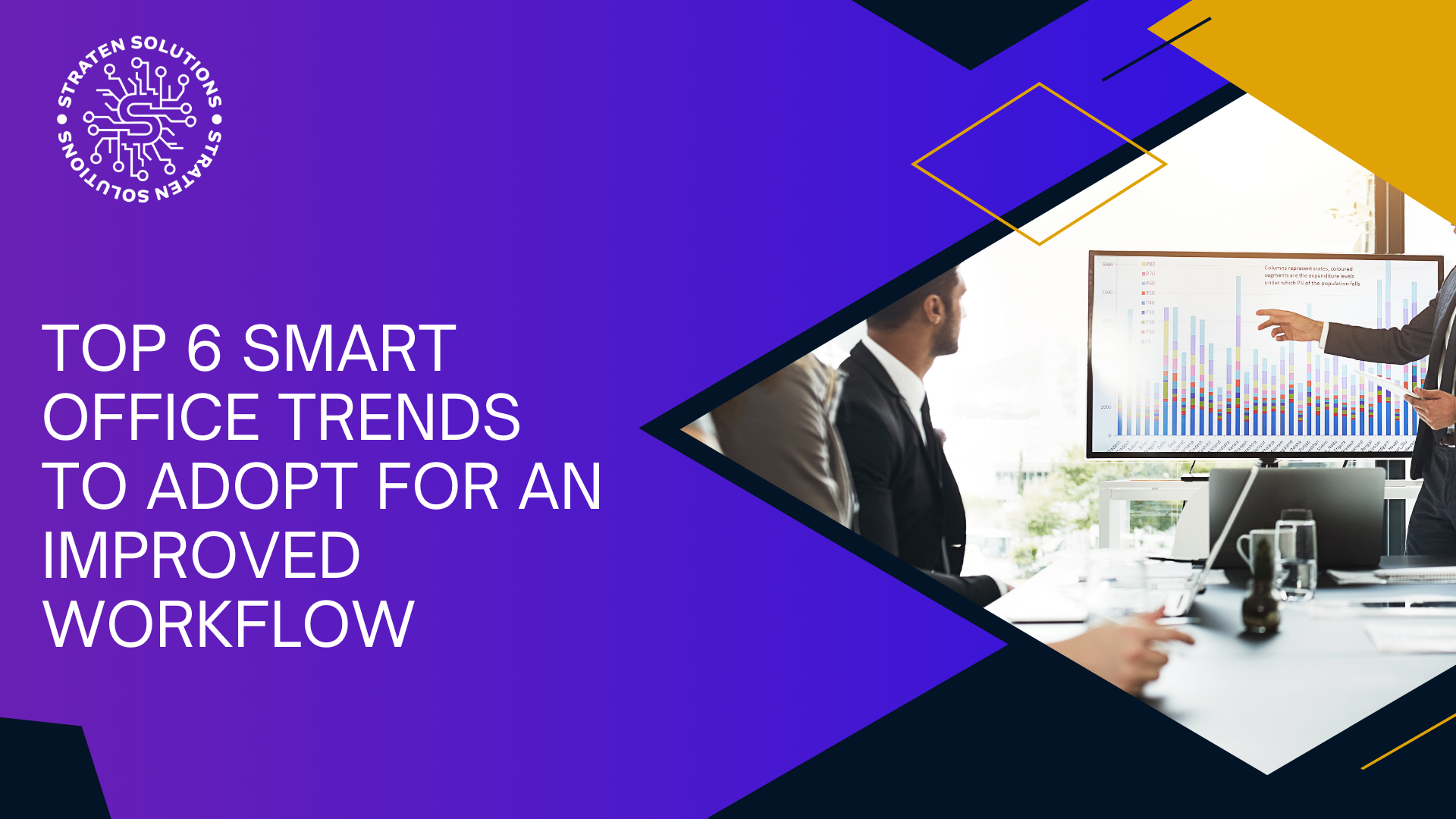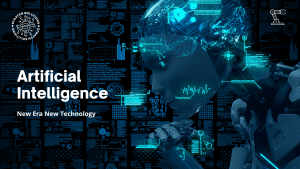
The modern office environment is evolving rapidly. The days of dull cubicles and repetitive tasks are fading away. Now, smart offices are emerging as dynamic spaces that drive innovation, support employee empowerment, and enhance collaboration.
Technology largely powers this evolution, offering smart features that blend effortlessly with physical workspaces. With a plethora of choices available, it can be challenging to know where to begin.
To help you navigate this landscape, here are six leading smart office trends to consider. These trends are designed to elevate productivity and improve employee satisfaction.
1. Internet of Things (IoT) Devices
Connected Office Equipment
IoT devices are transforming the workplace by connecting office equipment for improved efficiency and communication. For instance, smart printers can notify you when they’re running low on paper or toner, while smart coffee machines can have a fresh brew ready by the time you arrive. By automating routine tasks, IoT devices save time and reduce stress, streamlining daily operations.
Smart Lighting and Climate Control
Smart lighting and climate control systems are revolutionizing office environments by adjusting automatically based on occupancy and time of day. Equipped with sensors, these systems monitor the surroundings and make real-time adjustments to maintain optimal comfort while cutting energy costs. A well-lit and comfortable workspace enhances employee productivity, and automating these adjustments boosts overall office efficiency.
Enhanced Security
IoT devices are also improving office security with smart locks and cameras that offer real-time monitoring and control. You can manage access remotely and receive instant alerts if any unusual activity is detected. This advanced security setup not only provides peace of mind but also ensures your office stays safe and secure.
2. Artificial Intelligence (AI) and Machine Learning
Personalized Workspaces
AI is transforming workspaces by personalizing them to fit individual preferences. It learns employees’ habits and adjusts settings such as desk height, lighting, and digital workspace layout to match their needs. Tailoring the environment in this way enhances both comfort and productivity.
Virtual Assistants
AI-powered virtual assistants help manage tasks and schedules. They can set reminders, book meetings, and provide information on demand. Virtual assistants like these streamline daily activities. This allows employees to focus on more critical tasks.
Predictive Maintenance
AI can forecast when office equipment will require maintenance, minimizing downtime and keeping operations running smoothly. By anticipating issues before they arise, predictive maintenance extends the lifespan of equipment and helps avoid unexpected breakdowns.
3. Collaborative Technologies
Unified Communication Platforms
Unified communication platforms bring together messaging, video conferencing, and email into a single system. This integration simplifies communication and keeps everyone connected, reducing the need to switch between multiple apps and streamlining workflows.
On average, employees waste nearly 4 hours each week reorienting after an app switch.
Digital Whiteboards
Digital whiteboards enhance collaboration during meetings. They allow team members to share ideas in real time, regardless of location. Digital whiteboards save and share notes instantly, improving meeting efficiency and follow-up.
Project Management Tools
Project management tools keep everyone on the same page. They track tasks, deadlines, and progress. These tools provide visibility into project status. This helps ensure nothing falls through the cracks. By using project management software, teams can work more efficiently. As well as meet deadlines consistently.
4. Remote Work Solutions
Cloud-Based Services
Cloud-based services are pivotal in enabling remote work by allowing employees to access files and applications from any location with an internet connection. This level of flexibility is essential in today’s dynamic work environment, accommodating diverse work styles and locations. Cloud services not only facilitate seamless collaboration and access to necessary resources but also offer advanced security measures and comprehensive backup solutions. These features ensure that data is protected from unauthorized access, loss, or corruption, providing peace of mind and maintaining business continuity even in the face of potential disruptions.
Virtual Private Networks (VPNs)
VPNs (Virtual Private Networks) are crucial for securing remote connections by encrypting data and safeguarding it from cyber threats. They ensure that employees can work safely and privately from any location, providing a secure channel for accessing company resources. Implementing a VPN is essential for maintaining robust security in a remote work environment, protecting sensitive information and ensuring compliance with data protection regulations.
Video Conferencing Tools
Video conferencing tools promote communication with remote teams. They provide face-to-face interaction, which is vital for team cohesion. High-quality video and audio ensure effective communication. These tools also offer features like screen sharing and recording, enhancing their utility.
5. Smart Furniture
Ergonomic Designs
Smart furniture features ergonomic designs that enhance both health and productivity. Adjustable desks and chairs can be tailored to fit each employee’s needs, reducing the risk of injury and increasing overall comfort. Investing in ergonomic furniture boosts employee well-being and contributes to a more productive and efficient work environment.
Integrated Technology
Some smart furniture incorporates advanced technology, such as wireless charging and built-in sensors. Desks with integrated charging stations keep devices powered while reducing clutter. Meanwhile, sensors can prompt employees to take breaks or adjust their posture, fostering a healthier work environment. These technological features enhance both the efficiency and well-being of the workspace.
Modular Furniture
Modular furniture provides exceptional flexibility, allowing for easy reconfiguration to meet evolving needs. This adaptability is perfect for dynamic work environments where collaboration is key. It can be quickly adjusted to accommodate growing teams or shifting project requirements, ensuring that the workspace remains functional and supportive of various activities.
6. Data Analytics
Performance Metrics
Data analytics tools monitor performance metrics, offering valuable insights into productivity, workflow efficiency, and employee satisfaction. By examining this data, managers can make informed decisions that enhance processes and optimize resource allocation, leading to more effective operations and improved outcomes.
Space Utilization
Analytics can also enhance space utilization by using sensors and software to track how office areas are used. This data provides insights into space efficiency, allowing for the design of more effective layouts. By optimizing space, companies can reduce costs and create a more functional and adaptable work environment.
Predictive Insights
Predictive analytics forecast trends and potential issues. This allows businesses to proactively address problems before they escalate. Predictive insights can improve everything from inventory management to employee scheduling.
Contact Us for Help Optimizing Your Technology
Adopting smart office trends can transform your workplace. By integrating these trends, businesses can create a more productive work environment. Stay ahead of the curve and embrace these innovations to improve your workflow.
The future of work is smart, and the time to start is now. Need some help from our IT optimization experts?
Contact us today to schedule a chat.







